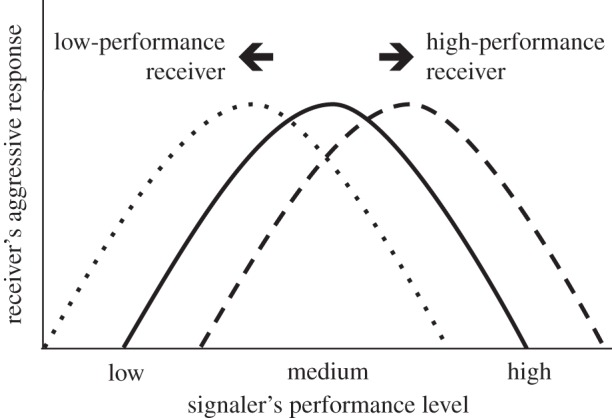Figure 3.

A conceptual model describing the intensity of responses by territorial males to simulated territorial intrusion, as we expect it to vary with two factors: the level of threat signaled by an intruder and the subjects' own vocal performance levels. The x-axis represents the level of threat signalled by the intruder as the level of vocal performance, and the y-axis represents the aggressive response intensity of the receiver (the territorial male). Response intensity has recently been modelled as a parabolic function, to account for the expectation that territorial males should avoid rather than confront intruders with high-threat signals (solid line, from de Kort et al. [14], modified from Collins [13]). We extend this model by accounting for expected variation in the quality of territorial subjects, here reflected in the vocal performance of the songs of playback subjects. As illustrated in this model, we predict that the parabolic function would shift to the right for territory owners producing high-performance signals (dashed line), and to the left for territory owners producing low-performance signals (dotted line). According to this model, as intruder signals increase in performance (levels of threat), low-performance territory holders would switch from aggression to avoidance sooner than would high-performance territory holders. These expectations are consistent with the outcomes of our multiple regression models and the relationships illustrated in figure 2.
